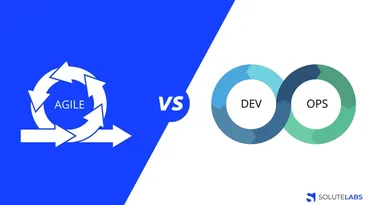In the world of modern business, the pursuit of success is a never-ending journey. And in this journey, the path to victory is based on teamwork. Teamwork drives the engine of organizational success. It is the foundation that drives businesses forward and helps them achieve their goals. It is the essential ingredient that propels businesses forward and helps them achieve their goals.
In today's complex and fast-paced business environment, the need for cross-functional teams has never been greater. Cross-functional teams comprise individuals from different functional areas or disciplines working harmoniously to achieve a common goal. They bring diverse perspectives, ideas, and skills to the table, which enables them to create innovative solutions to complex problems. This article will discuss agile methodology, cross-functional teams, challenges, and strategies.
Agile Cross-Functional Teams
An agile methodology is an approach to project management that emphasizes flexibility, adaptability, and collaboration. It is a framework for managing and completing complex projects, especially those with changing requirements and uncertain outcomes. Agile methodology is based on the principles outlined in the Agile Manifesto. It focuses on open communication, software in use, customer collaboration, and responding to change.
Cross-functional teams in agile are made up of individuals from different functional areas working together to achieve a common goal. Agile methodology provides cross-functional teams with a variety of approaches to help them work well together, namely:
1. Daily Stand-up Meetings:
These short, daily meetings allow team members to check in with each other, share progress updates, and identify any issues or challenges.
2. User Stories:
User stories are simple accounts of a feature or requirement that captures the user's perspective.
3. Sprints:
Sprints are short, time-boxed work periods for teams to complete a set of user stories/tasks.
4. Retrospective:
These are regular meetings in which the team reflects on their work, identifies areas for improvement, and develops action plans for making changes.
Advantages Of The Cross-Functional Teams
Cross-functional teams bring together individuals from different functional areas to work together for a common goal. This approach has a heads-up in the following ways:
1. Increased Efficiency and Productivity:
Cross-functional teams are designed to work on specific projects that require diverse skill sets. Cross-functional teams in agile bring together individuals with different competencies. Therefore, working together helps them complete tasks faster than traditional teams. This approach improves productivity, leading to less time and effort required to complete tasks.
2. Better Problem-Solving Abilities:
Cross-functional teams have greater expertise which makes them better equipped to solve complex problems. Each team member brings unique skills and knowledge. This enables the team to quickly identify the problem and effectively resolve issues.
3. Enhanced Creativity and Innovation:
Cross-functional teams encourage innovations. Team members can share ideas and perspectives from their areas of expertise. This approach often results in developing innovative solutions versus a traditional team.
4. Improved Communication and Collaboration:
Cross-functional teams require frequent interaction among team members. This approach fosters a culture of open communication and sharing of ideas. It builds trust, better decision-making and overall performance.
Also, Read: How Agile and Outsourcing Can Be Better Together?
Challenges Faced By Cross-Functional Teams
Cross-functional teams can be highly effective. Even then they face issues that can slow them down. Some common challenges faced by cross-functional teams include:
1. Lack of Clarity on Roles and Responsibilities:
When a workgroup from different functional areas gets together, sometimes there is a lack of clarity on tasks and responsibilities. This can lead to duplication of effort, missed deadlines, and other issues that impact team performance.
2. Communication and Coordination Issues:
Cross-functional teams often work on complex projects. Coordination and communication are therefore important. A breakdown in an exchange between team members can lead to delays, errors, or misunderstandings.
3. Resistance to Change:
Cross-functional teams often require team members to work beyond their areas of expertise. This might lead to resistance to change and embracing new ways of working or thinking.
4. Cultural and Personality Differences:
There is value in teams from different cultures, backgrounds, and personalities. However, sometimes this can lead to misinterpretation and conflict. Teams must establish a culture of respect and openness where everybody feels comfortable sharing perspectives and opinions.
Roles in Cross-Functional Agile Teams
The roles within a cross-functional agile team can vary depending on the project's needs. Here are some of the most common roles you might find:
1. Product Owner:
Responsible for defining and prioritizing the product backlog and ensuring the team works on the highest-value tasks.
2. Scrum Master:
Responsible for facilitating the Scrum process, removing impediments, and helping the team to improve their performance.
3. Development Team:
A self-organizing, cross-functional group of individuals who are responsible for delivering the product increment.
4. Business Analyst:
Responsible for analyzing and documenting business requirements, user stories, and acceptance criteria.
5. UX Designer:
Responsible for creating user-centered design solutions that meet the needs of the end users.
6. Tester:
Responsible for ensuring that the product meets the quality standards set by the team and that all features are thoroughly tested.
Also, Read: How Does Agile Work With UX Design?
Steps to Build a Cross-Functional Agile Team
Building a cross-functional agile team can be a complex process. Here are some steps that you can follow to help ensure success:
1. Identify the Project Goals and Objectives:
Determine the scope and purpose of the project to assemble a team that can accomplish the goals.
2. Determine the Required Skill Sets:
Identify the skills required for the project and build a team with the necessary skills.
3. Assemble the Team:
Once you have identified the skills needed, assemble a team with diverse backgrounds, experiences, and expertise to form a cross-functional team.
4. Foster Teamwork and Communication:
Encourage open communication and collaboration among team members to promote a positive team dynamic.
5. Define Roles and Responsibilities:
Clearly define the roles and responsibilities of each team member to ensure accountability and minimize confusion.
6. Establish a Workflow and Process:
Establish a workflow and process that aligns with agile principles, allowing the team to work in sprints and continuously iterate.
7. Set Goals and Measure Progress:
Establish goals for the team to work towards and track progress to ensure the project is on track.
Building & Management Strategies in a Cross-Functional Team
There are some strategies for building and managing cross-functional teams. It is important to follow these to ensure the work done is in line with the vision and mission, namely:
Aligning Goals & Objectives With Organizational Strategy:
The goals and objectives of cross-functional teams must be aligned with the overall strategy. This helps to ensure that the team’s work contributes to the organization’s success.
Establishing Clear Roles & Responsibilities:
It is essential to define roles and responsibilities for each team member in a cross-functional team. This avoids confusion and duplication of effort. It ensures team members are aware of their contributions to the team’s success.
Encouraging Open Communication & Collaboration:
It is important to encourage team members to share information, ideas, and feedback. This builds healthy working relationships between colleagues.
Providing Continuous Learning & Development Opportunities:
Continuous learning and development are essential for building and maintaining high-performing cross-functional teams. It is vital to provide training, coaching, and other development opportunities to help team members develop new insights and expertise. It is also essential to stay up-to-date with industry trends and best practices to improve their performance.
Fostering A Culture Of Trust & Respect:
Building trust and respect among team members is critical for the success of cross-functional teams. Being up-to-date with industry trends and best practices, teams can continuously improve their performance.
Also, Read: How to Execute Fixed-Cost Projects Using Agile Practices?
Conclusion
In conclusion, cross-functional teams are essential for achieving organizational success. Organizations can achieve their goals more efficiently by leveraging the benefits of agile methodology and implementing strategies for building and managing effective cross-functional teams. Organizations need to embrace agile cross-functional teams to remain competitive and succeed in today's dynamic business environment.
Contact SoluteLabs to boost business efficiency and innovation, manage diverse teams, and navigate the challenges of complex projects. Learn how to improve communication and collaboration, achieve better problem-solving, and enhance creativity and innovation through the agile project management approach. Contact us now for more information on how we can help in achieving your business goals.
Frequently Asked Questions
Have a product idea?
Talk to our experts to see how you can turn it
into an engaging, sustainable digital product.




